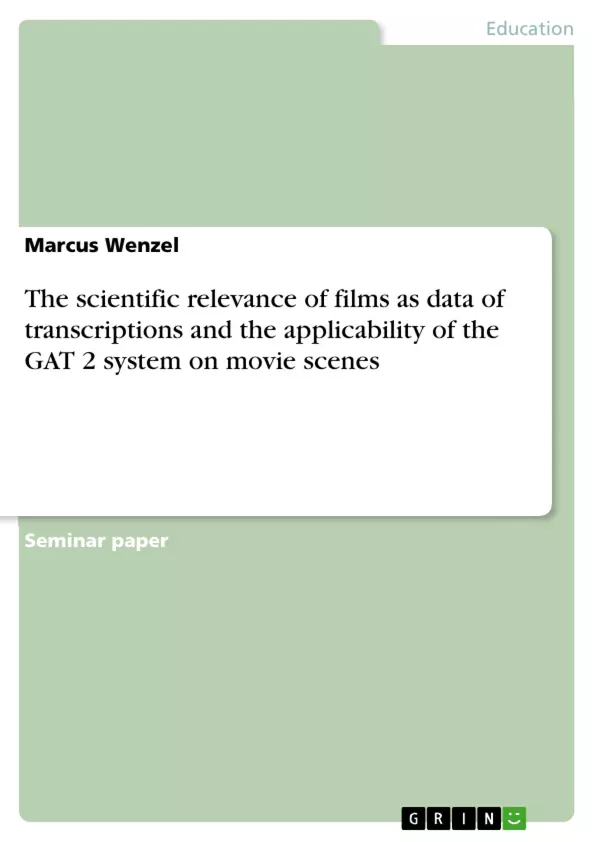Since the very beginning of mankind, humans try to depict reality. Not only to broaden their horizon by learning from it, but also to convey their achievements into future generations. You can see a clear development from the Stone Age, where simple cave-paintings were only able to depict actions that could be imitated, to the ancient advanced civilization, who tried to preserve spoken conversations, because oral discourse became the main but volatile transmitter of information.
One prime example and also a possible starting point for the idea of transcriptions can be seen in the ancient Greek society, “when the ideal of eloquence was central, [and] writing was viewed as a record of the spoken language”. The great thinker Socrates for instance, was transcribed by his student Plato. It was the urge Plato’s to save the spoken words of Socrates for posterity. His transcriptions or re-narrations of whole dialogues are now considered as the foundation for western philosophy. Of course this transcript was a rudimentary and corrected transcription because of its only purpose to spread ideas. During the ages,
writing developed from an illustration of conversation to an own part of cultural expression.
Although it is evident, that encoding spoken words into another semiotic signsystem can never be objective, transcriptions are useful sources in empirical science. In some case, subjectiveness can even be an advantage, as long as the results of research are reflected on. My main focus of this term paper lays on the suitability of movie scenes for transcriptions and if they could have a unique relevance in scientific conversational researches. For this purpose I transcribe two scenes from the film Fight Club by David Fincher with the conventions of the “discourse and conversation-analytic transcription system” called GAT and by that, test the applicability of this system to the branch of discourses in the medium of film.
Inhaltsverzeichnis (Table of Contents)
- Introduction
- GAT 2
- Transcription of films
- Transcription
- Applicability of GAT 2
- Conclusion
Zielsetzung und Themenschwerpunkte (Objectives and Key Themes)
This term paper investigates the scientific relevance of film scenes as data for transcriptions and analyzes the applicability of the GAT 2 system to the discourse of film. The paper aims to determine whether movie scenes can provide valuable insights into conversational analysis and if the GAT 2 system is a suitable tool for analyzing film dialogue.
- The challenges of using film scenes as data for transcriptions
- The GAT 2 system and its suitability for analyzing film dialogue
- The role of prosody in film dialogue and its relevance for transcription
- The potential contributions of film transcription to scientific research
Zusammenfassung der Kapitel (Chapter Summaries)
- Introduction: This chapter explores the historical development of transcription from its early origins as a method for preserving spoken language to its current use in empirical research. The author emphasizes the importance of transcription for understanding communication and the challenges of capturing the nuances of real-time interaction.
- GAT 2: This chapter introduces the GAT 2 system, a commonly used transcription system designed to standardize the notation of spoken language. The author discusses the system's focus on prosody and its suitability for analyzing natural conversation. The chapter also presents the different levels of detail included in GAT 2 transcripts, from the minimal transcript to the fine transcript.
- Transcription of Films: This chapter explores the challenges and potential benefits of using film scenes as data for transcriptions. The author discusses the artificiality of film dialogue and the importance of considering the context and intentions of the actors. The chapter also examines the implications of editing and other filmmaking techniques for transcription analysis.
Schlüsselwörter (Keywords)
This term paper examines the transcription of film dialogue using the GAT 2 system, focusing on the scientific relevance of films as data, the challenges of transcribing artificial dialogue, and the suitability of the GAT 2 system for capturing prosodic features in film dialogue. Key concepts include conversational analysis, transcription systems, prosody, film dialogue, and empirical research.
- Citation du texte
- Marcus Wenzel (Auteur), 2012, The scientific relevance of films as data of transcriptions and the applicability of the GAT 2 system on movie scenes, Munich, GRIN Verlag, https://www.grin.com/document/450705



